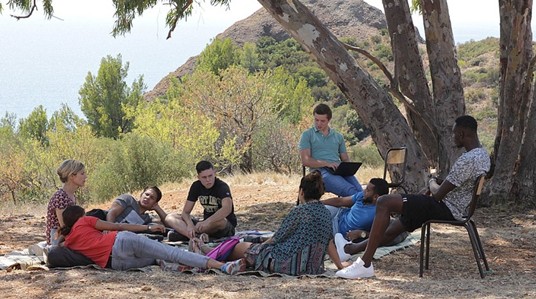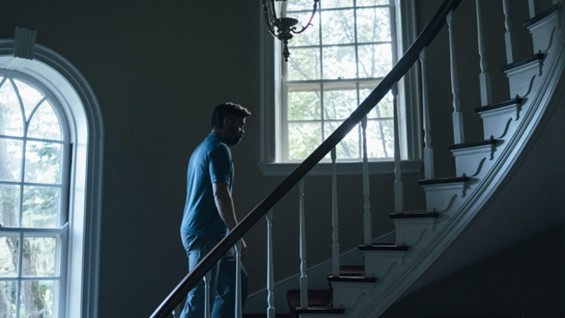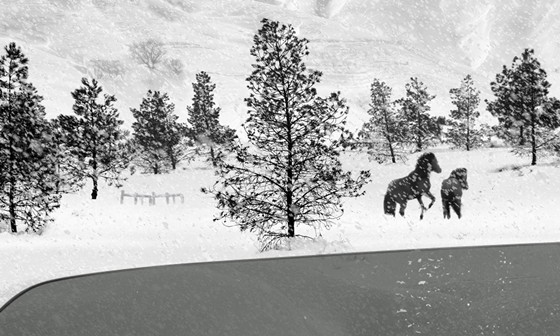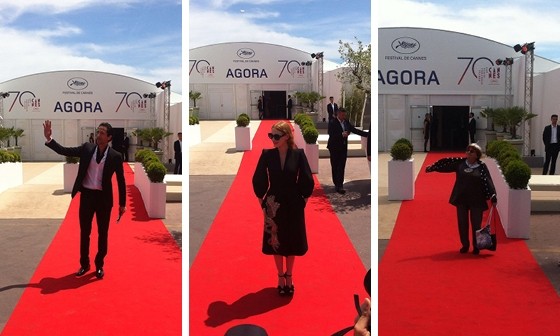A couple of weeks ago I headed to the 70th Annual Festival de Cannes for the first time. Luckily for me, I was joined by seasoned Cannes veterans – ICO Director Catharine, and Senior Programmer Jonny Courtney- who were able to offset my initial frustration of not receiving access to the newly introduced online ticket request system, by assuring me that there would be plenty of spares and that good old fashioned orderly queuing would ensure I’d get to see plenty of films. They helped me navigate the festival, which can be confusing at times, and provided me with some invaluable tips.
The allocation of tickets appears to be completely at random, although many theories persist about why one individual might receive a bounty of highly sought after gala screening invitations, and another is left to barter for spares outside The Palais. Theories that range from if you have previously not used a ticket, they remember and penalise you in future, to the photo on my festival pass makes me look a bit smug. The internal system at play in the accreditation office remains a somewhat bizarre and closely guarded secret, and adds to the ridiculous maze of etiquette and formality that initially had me feelingv slightly on edge. I had heard early reports of people being forcibly removed from queues for wearing shorts, so I packed a suit just in case, y’know, Will Smith invited me to a yacht party, but was immediately put at ease when I arrived to find my colleague had proudly walked the red carpet in their Converse.

Without any definitive plan of what I could feasibly watch, I decided to try my luck wherever possible and haphazardly join queues to the festival sidebars, often with little to no context of what I’d be queuing to see. This proved to be a great plan. For instance, I joined the first queue I saw forming after being denied entry to a party I hadn’t RSVP’d to, and after an hour and a half I was in the Debussy Theatre watching Laurent Cantets L’Atelier with the cast sat a few rows back from me. Whilst the copies of Screen Daily that can be obtained from the Palais are essential to give yourself a rough idea of what to at least try to queue for, more often than not you’ll find yourself getting tantalisingly close to the entrance only to be told a screening is full; you need to leave yourself at least an hour before the screening time to start queuing. As it happened, the first film I saw was in the large temporary Salle du Soixantieme cinema next to the Palais, for which we arrived quite late, but were promptly seated within 15 minutes.

I settled in to Ruben Ostlund’s The Square with a vague idea of the buzz it had generated during its first screening the day before, and having previously worked for a contemporary art gallery, was sold on its write up as an art world satire. Not having to queue and seeing the eventual Palme D’Or winner for your first Cannes film is about as jammy as it gets, and despite the apparent upset caused by it pipping Loveless and 120 Beats per Minute to the main prize neither of which I was able to see as they appeared earlier in the programme the film really stuck with me. There is one set piece in particular, which has since been commented on a lot, which is incredibly hard to watch, involving a performance artist’s over-commitment to his craft when let loose on a fancy dinner party. It is genuinely intense, yet will have you holding back inappropriate laughter. I later learned that Terry Notary, the animal-movement expert central to the scene, had repeated this performance on the red carpet, which I wouldn’t have hung around long to watch for fear of being chimp-suplexed. The film takes its aim at how we engage with culture, make assumptions based on class, and how attitudes toward what is deemed morally appropriate – how you ought to behave in public for instance – are undermined by our baser instincts and a collective herd-mentality, by following the decline of a celebrated curator as he explores his macho-side after getting a kick out of confronting an assailant (in a scene apparently inspired by an incident in which Ostlund had his phone stolen in real-life). It throws up a lot of ideas which makes it hard to take in as a whole, and the tone might put some off, but its hard not to appreciate the more plainly surreal, slapstick and absurd moments, not to mention a very strange score that seemed to be made up of voice manipulation (although I can find no reference to it online), and it felt ever more pertinent given the context in which I was able to see it.

My first invitation screening thank you to the ICO colleague who secured me a spare – was an 8:30am showing of TheKilling of a Sacred Deer, Yorgos Lanthimos follow up to The Lobster. I woke up with 10 minutes to spare, grabbed the complementary Biscoff Biscuits next to the tea bags in our apartment, and headed to the 2000+ seat Grand Theatre Lumiere, the festivals largest venue. If ever there was a film to ease you into the day, like an episode of Frasier on a Sunday morning, this is not it. We’re talking children bleeding from the eyes! The mannered and stunted delivery that we’ve become accustomed to in Lanthimos’ films had a high hit ratio in terms of eliciting some big laughs from the audience, via mundane observations on wrist watches and some questionable parenting, but a spattering of traditional Cannes booing at the end, along with a lukewarm jury score, indicated that it split the room. I quite enjoyed it, and there’s a great performance from Barry Keoghan (71, Trespass Against Us) as a sociopathic french-fry enthusiast, but I would have liked to have seen it on a fuller stomach.

Other notable films that I managed to see included Wind River,the second feature from Taylor Sheridan, an investigative thriller set within a Native American Reservation in central Wyoming, and 24 Frames, Abbas Kiarostami’s posthumous film. The former received a lengthy standing ovation after its premiere in the Un Certain Regard competition, and draws attention to the US Governments shocking inability to confirm the numbers of missing and murdered indigenous women, through what Sheridan describes as an insidious mixture of apathy and exploitation. Kiarostamis non-narrative 24 Frames requires patience. Composed of 24 mostly static segments, each four and a half minutes long, it explores the space and time before and after a photograph has been taken, utilising green screen technology to enhance and mediate on a selection of still photographs that he took throughout the course of his life. The sound is mostly diegetic, save for a very understated score that creeps in at certain points to great effect, however this was slightly undermined during the screening I attended by some quite loud snoring and a continual stream of walkouts (again this took place at 8:30am, so hardly surprising). I have to admit to finding it hard to stay engaged throughout,however I fought through the yawns and seat shuffling and stayed till the end.

To make my first ever trip to Cannes all the more surreal, after leaving the Lumire Theatre as the end credits rolled for 24 Frames, I waited outside to check the days schedule and began to realise a small crowd was forming within the security cordon. Suddenly someone started yelling excitedly, and there infront of me was Abel Ferrara with his daughter. After an impromptu photocall from the spattering of press and (mainly) amateur photographers, he got into a car next to where I was standing. Then things started to get really weird. Antonio Banderas, in a blue suit with a pencil tache – recognisable to me after a yell of eyyy, its Zorro! bounded out of a tent and started signing autographs. Park Chan-Wook casually strolled past with a rucksack. Then they kept coming: Ken Loach, a very animated Christoph Waltz, Roman Polanski, Benecio Del Toro, Paolo Sorrentino puffing on a massive stogie, Salma Hayak, Jean-Paul Gaultier, Nicholas Winding Refn, Mads Mikkelsen, Tilda Swinton, Michael Haneke in his Larry David blazer, Adrian Brody and the peice de rsistance, Agns Varda, who pretended to hide behind two massive plant pots. Jessica Chastain opened up the barriers to meet the crowd, speaking fluent French, and was ushered to her car that would take her to the photo call celebrating the 70th Anniversary of the festival, where this rag-tag group of A-listers would all be saying ouis titi. Then, bounding down the red carpet, Will Smith popped up directly in front of me. There is an elderly French woman somewhere with a selfie of herself and Will Smith, with a rather bemused, slightly sunburned man in glasses in the background. I had to leave after that.

